News

Reporting floods well appreciated
With the foreword that safety is most important, reporting on flood events is welcome. Apologies; the web form is still only available in Icelandic but fairly self-explanatory. Please have a go and comment in English, that would be well appreciated.
Read more
Severe gale or storm
South and southeast severe gale or storm has been forecast in most of Iceland until Thursday morning. Northern Snæfellsnes has had the strongest winds. This evening, winds are increasing again. Storm or gale from the southeast and then the south, is forecast for the West and the North with wind gusts over 40 m/s. Winds will decrease in the West during the night but in the North not until morning. Rising stream- and river levels are likely in many regions. Travellers are cautioned against fording. After safe arrival, please report on observed flooding.

Update on the weather forecast and flood conditions
Following heavy rainfall overnight, stream and river levels remain high in the south.
Streams and rivers around Eyjafjallajökull, Mýrdalsjökull, and southern parts of Vatnajökull are very high. Further heavy rainfall is forecast for this region, so river levels will increase further until Thursday evening. In Selfoss, the river Ölfusá will continue to increase until late on Friday or early on Saturday.
Read more
On the weather forecast and the flood conditions
Flooding is occurring on Barðaströnd, Snæfellsness, and at the Mýrdalsjökull ice-cap. Note that river levels around Mýrdalsjökull will increase further overnight and on Thursday.
Flood conditions are expected in streams and rivers from Mýrdalsjökull to Hornafjörður. Travellers are urged to avoid all watercourses in the above-mentioned regions in the coming days.

Warning due to heavy rainfall and increased river levels
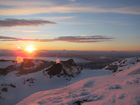
47th Nordic Seismology Seminar held in Reykjavík
The 47th Nordic Seismology Seminar takes place 11 - 13 October 2016. The seminar covers a wide range of topics related to seismological research, such as automatic detection of earthquakes, improving methodology in data analysis, hazard assessment and engineering seismology, as well as structural studies of the earth's crust and upper mantle. As this year's seminar takes place in Iceland, a special focus will also be on volcano seismology, magma tracking in the crust and eruption early warning.
Read more
Seismic swarm at Katla
An intense seismic swarm is ongoing since yesterday morning 29 September at Katla volcano. An intense pulse started today at 12:02 (30 September) with several earthquakes around magnitude 3 or larger. No seismic tremor has been detected. Due to the unusually high level of unrest at the Katla volcano we rise the aviation colour code from green to yellow. The volcano continues to be monitored closely.
Read more
Dyngjujökull station
In June 2016 a weather station was established on the upper reaches of Dyngjujökull, about 10 km north of the Grimsvötn caldera, at 1689 m above sea level.
A seismometer has been in operation by the IMO at the site since the
autumn of 2014 and the main purpose of the new weather station is to monitor conditions at this important location in the network, amongst the
volcanoes of Vatnajökull.
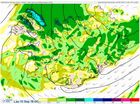
Heavy rain is forecast
Heavy rainfall in the East fjords and heavy rain is forecast for the North. River levels are elevated due to rain, with the possibility of mud flows.
Heavy rain and discharge is forecast for Northern Iceland. Flash flows cannot be excluded.
Checking on drainage near buildings is encouraged. Read more
Minor jökulhlaup in Skaftá
8.9.2016: The level of Skaftá river has risen significantly. This suggests that a glacial outburst flood is in progress.
Hydrogen sulphide is released from the floodwater as it drains from the ice-cap and H2S is particularly potent at the ice margin (poisonous levels). Travellers must stay away from the edges of Skaftárjökull and Tungnaárjökull while the flood occurs.
Crevasses will develop rapidly around the ice cauldron, so travellers on Vatnajökull should stay away from the region.
Read more
Katla and Mýrdalsjökull
Since mid-June, there has been heightened earthquake activity in the Katla caldera. Summertime increases in caldera seismicity are an almost annual occurrence at Katla, often associated with the drainage of geothermal meltwater in the form of minor floods in glacial rivers from Mýrdalsjökull
These are not necessarily precursors to an imminent volcanic eruption.
Similar unrest has taken place at Katla several times since the 1950s
without culminating in an explosive eruption.
Travellers are urged to not spend time close to Múlakvísl, especially the upper reaches of the river, as measurements near to the source show unhealthy levels of hydrogen sulphide, signifying high concentrations of geothermal fluids.
Read more
Nordic Seismology Seminar in Iceland
The 47th Nordic Seismology Seminar will be held in Reykjavík, 11-13 October 2016.
The meeting will commence on Tuesday in the early afternoon and last until Thursday evening.
Those who are interested in attending, are encouraged to apply for participation.

On the Bárðarbunga gradual caldera collapse
The eruption in Holuhraun in central Iceland in 2014 - 2015 was the largest seen in Iceland since 1783. The ice-filled caldera of Bárðarbunga central volcano collapsed during the eruption as 1.9 km³ of magma flowed laterally from a magma reservoir under the volcano. Eruptions of this type are not common. This caldera collapse is the first where it has been possible to carry out detailed observations during the events. Unique data was obtained that threw new light on the mechanism of caldera collapses and their interaction with the associated eruptions. A large team of scientists has analyzed the data from Bárðarbunga and published the results in the journal Science.
Read more
On the micro-earthquake activity at Mýrdalsjökull
Seismic activity in the Katla caldera has increased in recent weeks, but this is not unusual during the summertime. The activity is associated with drainage of meltwater from several known ice-cauldrons due to hydrothermal activity. Four small floods have been detected and a smell of sulfur has been reported from several locations; these events combined with higher conductivity indicate presence of geothermal water. Measurements around Katla are not detecting signs of increased ground deformation or seismic tremor, both of which would be indicators of magma movement. Experts at IMO assess that an eruption is not imminent, however, a hazardous flood cannot be ruled out.
Read more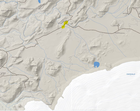
Warning to travellers on the Laugavegur trek
Travellers on “Laugavegur” in South Iceland, the popular highland trek from Landmannalaugar to Þórsmörk, are warned that water levels have risen in river Bláfjallakvísl, north of Mýrdalsjökull.
Hikers are advised not to attempt to cross the river, as waist-high water levels have been reported. The water discharge is expected to continue increasing over the week-end due to warm weather.
Read more
Monitoring of Hekla
Of the thirty active volcanic systems in Iceland, Hekla is one of the most active and potentially dangerous. In this summary we outline the types of hazards that might occur during the next Hekla eruption, and how the Icelandic Meteorological Office is monitoring the region.
Read more
Activity in the Bárðarbunga system since the end of the eruption
The Civil Protection Scientific Advisory Board met June 23rd, in order to review new data on the volcano Bárðarbunga.
The most probable explanation for ground deformation and earthquake activity in the area, is inflow of magma at about 10 to 15 km of depth below Bárðarbunga. There are no indications of magma collecting at shallower depths. This process is common in the aftermath of volcanic eruptions.
Probably meltwater will start collecting under the cauldrons along the caldera rim or within the caldera itself. Therefore it is imperative to monitor the evolution of the cauldrons, the seismic activity, ground deformation, geothermal activity and gas emissions in Bárðarbunga.
Read more
A minor glacial outburst flood in Skaftá
Within recent days, the level of the Skaftá river at Sveinstindur has risen slowly. Additionally electrical conductivity readings from the same location have increased. These observations suggest that a glacial outburst flood (jökulhlaup) is in progress.
The flood is not expected to cause any downstream disruption. However, precaution is needed at the ice margin and around the ice cauldron.
Read more
Supercomputer in Iceland
In order to fulfill environmental requirements, the DMI approached the IMO for a cooperation on a supercomputer. In 2014 a contract was signed and now the supercomputer is in full operation at IMO's premises. The cooperation is based on a long term, consistent relationship. DMI owns and runs the supercomputer while IMO operates the site infrastructure and costs are shared. This article gives the basic facts of the project and provides links to photos from the inauguration as well as a recording of the lectures.
Read more
On the Bárðarbunga earthquakes
Seismic measurements around the Bárðarbunga volcano show that the seismic moment release on the caldera ring fault has been gradually increasing since mid September 2015. This means that stronger earthquakes than before are detected in the last months. Despite of the increasing activity, there are currently no signs of volcanic tremor.
Read more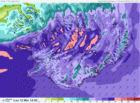
Warning - storm in Iceland
Icelandic Met. Office issues warning for bad weather conditions in Iceland tomorrow, Saturday 12th of March.
Read more
A FUTUREVOLC exercise
Over three days at the end of January 2016 all 26 FutureVolc partners, together with additional Stakeholders, were involved in responding to an evolving eruption scenario. The exercise was a great test of the new instrumentation and procedures introduced by FutureVolc.
Read more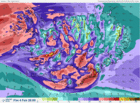
Storm in Iceland
Strong gale or storm with moderate or extreme precipitation first in the southern part. Moderating in the southwestern parts by evening, in the southeast parts early morning, in the north and east tomorrow morning, but not until tomorrow afternoon in the northwest.
Read more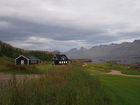
The weather in Iceland 2015
The weather in 2015 was considered unfavourable, except the autumn. The winter was dominated by a series of heavy windstorms, often with snow and rain. In late April, cold and northerly winds set in and persisted until the end of August, often with heavy precipitation in the Northeast and East, but in the Southwest the weather was slightly more favourable. The autumn (September to November) was the most favourable part of the year. The year 2015 was the coldest in Iceland since 2000, but this period has generally been abnormally warm so the average temperature was close to the 1961-1990 mean. In most parts of the country, the precipitation was well above normal.
Read more


